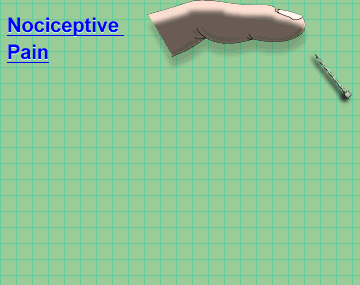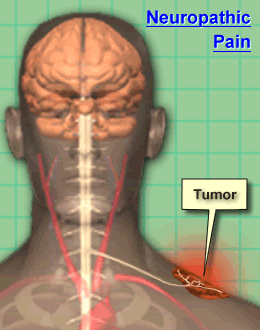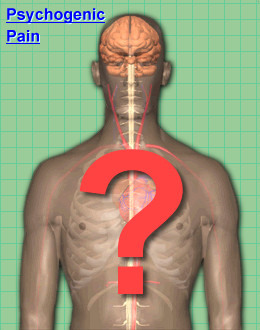A
Cancer Pain Tutorial
A
Comprehensive Visual Short Course
on Cancer Pain Management |
|
|
| Physiology
of Pain |
|
|
Cause:
|
Potentially
damaging stimuli, including mechanical, thermal, electrical, and
biochemical. |
Effects:
|
Aching,
Stabbing, Throbbing, Pressure-Like, Sensations |
| Cramping Sensation, Aching Discomfort |
|
The International Association
for the Study of Pain (IASP) defines pain as an unpleasant sensory
and emotional experience association with actual or potential tissue
damage, or described in terms of such damage. It is important to distinguish
different types of pain by their pathophysiology; however, the pain
in many patients is from multiple interacting etiologies. Because
of this complexity, the management of cancer pain is more successful
when a multidisciplinary approach is used
Nociception is the activity
produced in the afferent nervous system by potentially tissue damaging
stimuli. Pain is the perception of nociception. "When a finger is
pricked the damaged tissue send nociception in the afferent neuron
which is interpreted by the body as pain." It is created as a result
of ongoing activation of primary afferent neurons in cutaneous and
deep tissues.
Nociceptors respond to
various stimuli, including mechanical, thermal and biochemical events.
Nociceptive pain can be somatic or visceral. Somatic pain is typically
described as aching, stabbing, throbbing, or pressure like. Visceral
pain occurs when a hollow viscous is obstructed creating a cramping
sensation or when distention of organ capsules occurs, which creates
an aching discomfort.
|
|
Cause:
|
Peripheral
Nerve Root Involvement With Tumor |
Effects:
|
Burning,
Tingling, Numbing, Pressing, Squeezing, Itching.
Can
be constant or fluctuate in severity. Neuropathic pain is dysesthetic in
nature.
|
|
| Neuropathic
pain occurs when peripheral nerve roots are involved with tumor. Aberrant
somatosensory processes occur when the peripheral nerve is injured
by tumor expansion or infiltration. The pain that is created is dysesthetic
in nature. It is described as either burning, tingling, numbing, pressing,
squeezing, and/or itching. It can be constant or it can fluctuate in
severity. It is typically described as extremely unpleasant and often
intolerable. |
|
Cause:
|
Underlying
structural lesion can not be found and pain perceived seems to
be excessive for the etiology identified. |
Effects:
|
Frequently
the major contribution to the pain is psychological. Because
the component of pain is psychogenic, it will not respond to
drug therapies.
|
|
Pain is
termed idiopathic if an underlying structural lesion cannot be identified
or if the pain perceived seems to be excessive for the etiology identified.
Frequently in patients with this type of pain, the major contribution
to the pain is psychological.
This is
not to say that the pain is "imaginary." It is to highlight
the complex nature of pain, being already defined as a sensory and
emotional experience, which cannot be separated. The understanding
of this is crucial to adequate pain management because the component
of pain that is psychogenic will not respond to drug therapies, in
spite of increasing the drugs to their toxicities. |


